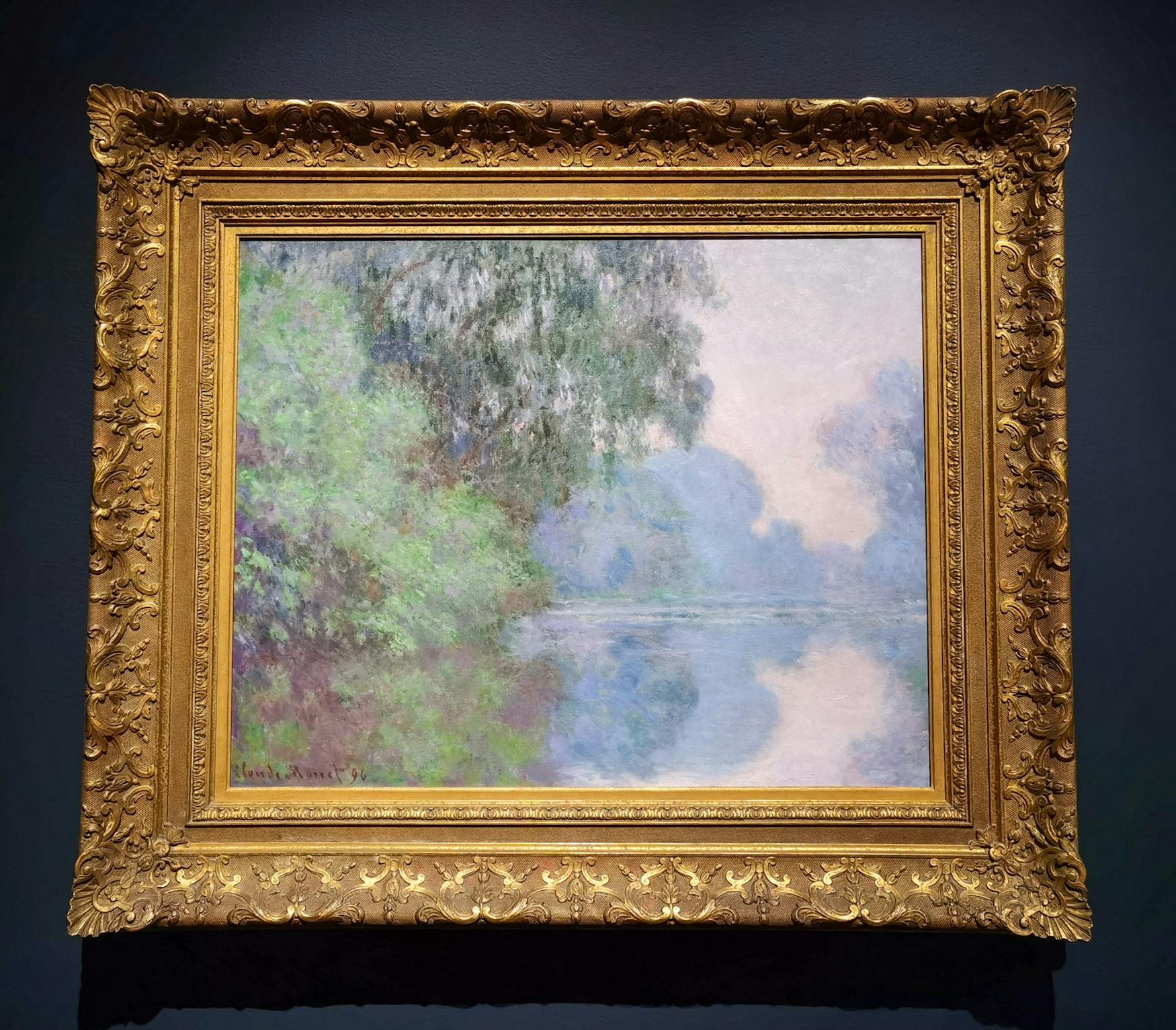Impressionism and juxtaposing mediums: MFA’s Monet, Rodin, and Boston

The Museum of Fine Arts, Boston, put on a visual feast for the lovers of Impressionist art in the Linde Family Wing for Contemporary Art. Impressionism is an artistic movement developed by a group of French artists during the 19th century in pursuit of spontaneity and immediacy. The exhibition displays the artwork created by two of the most prominent French Impressionist masters, Claude Monet (1840-1926) and Auguste Rodin (1840-1917). The two artists were born two days apart and grew up to be friends and mutual supporters. By juxtaposing Monet’s paintings with Rodin’s sculptures, the exhibition creates an engaging visual dialogue between the two creative minds, inviting the viewer to contrast and compare their distinctive styles despite their selection of different artistic mediums.

Monet’s painting series of the “Morning on the Seine, near Givenchy,” created in 1896, is what viewers first see when entering the gallery. Although the series showcases similar compositions and color schemes, the three pictures presented in this series portray the glistening Seine river and the flourishing foliage at different times of the day and across seasons. To study the nuanced changes of atmosphere and shifting sunlight, Monet made himself a studio boat to paint en plein air (out of the doors). He would row along the river from dawn to dusk transcribing the evanescent moments of the natural world with painterly brushstrokes and brilliant colors.

In the series of Seine river, the images of the trees fuse with their reflection in the water. Monet’s intentional rendering of an indistinctive boundary between reality and illusion could be read as the artist’s contemplation on his contemporary discourse of the tension between objectivity and subjectivity. The invention of photography in the 19th century greatly challenged artists’ profession and the definition of art. What would be the point of artists taking painstaking efforts to create works if cameras can reproduce the reality in minute details at a much faster speed? In the painting series “Morning on the Seine, near Givenchy,” Monet has already given his answer. If you try to imagine the paintings being hung upside-down, you may find that the reversal does not interfere with the legibility of the painting. This effect owes much to the high symmetricity of the trees and their reflection in the water. Monet’s connection and juxtaposition of the plants and their mirror images metaphorically articulate his reflection on the relationship between the objective reality and subjective arts: art is derived from nature and can constitute a parallel reality.
On the other side of the wall hangs Monet’s other painting series, including the “Valley of the Creuse” and the “Rouen Cathedrals.” The “Creuse” series depict the Creuse Valley in Central France bathed in shining sunshine, while the “Cathedral” series delineated the encrusted stone façade of Rouen Cathedral in Normandy under different light conditions. Again, light and shadow is the central subject of the paintings. Monet loads his paintbrush with heavy impasto, recreating the fleeting impressions of mutable sunlight. His unblended colors and quick brush strokes were then often criticized by his contemporary conservative critics, who worshipped a more traditional style of paintings that feature classical compositions and a smooth transition of color. In fact, the term “impressionist” was initially a derisive name coined by journalist Louis Leroy who intended to ridicule the sketchy quality of Monet and his impressionist colleagues’ artistic style after viewing the first Impressionist group show in 1874.

Rodin, often perceived as the founding figure of European modern sculptures, was also severely attacked to the “incompleteness” and roughness of his bronze and marble sculptures. Just like Monet, Rodin boldly broke away from the convention of rendering a refined sculptural surface with refined details and a static formulaic pose to figural representation. He intentionally left marks of his hands and chisel on the surface of his work and sometimes kept part of the rough marble block unpolished. Rodin focuses on the natural expression of figures’ motion, force, and tension. In the Ceres (1896), Rodin depicts the ancient goddess Ceres. He manipulates the degree of execution creating a sharp contrast and tension between the goddess’ smooth skin and the chunky, rough-hewn marble as the figure’s body. It is at once a finished sculpture but also a sculpture that records the artist’s creating process. The abstract quality and manual marks on the sculptural surface imbues the bust with solidity, vivacity, and mysterious charm.

The ingenious placement of Rodin’s and Monet’s artworks in the gallery space allows the viewer to make visual connections and comparisons between the two masters’ works and experience the spirit of impressionism. Seeing the paintings and sculptures side by side, I could sense the buoyant energy flowing back and forth from Monet’s tip of the brush to Rodin’s carving chisel. The visible spontaneous brushwork in Monet’s canvases echoes the modeling gesture of Rodin’s figural sculptures. Both artists sacrificed visual details of their subjects to articulate the essence — for Monet, it is the transitory effects of light, while for Rodin it is the burst of emotion and physical movement. To maximize the luminosity of Monet’s paint and present the full beauty of Rodin’s marble sculpture, the curators consciously created a dimly lit space and adopted dark blue wallpaper as the background for this exhibition. These curatorial strategies together with the brilliant artworks present the visitor a rich story of the two rebellious artists’ avant-garde exploration and experimentation.




Please note All comments are eligible for publication in The Justice.